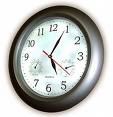Aesthetically speaking, the shoulders can be a very underrated muscle to work. People always talk about having a nice chest or big arms but in my opinion nice shoulders will make the upper body look much better.
The shoulder is a very complicated area consisting of a lot of muscles. Within that one joint you have the 4 rotator cuff muscles and the chest an lats also insert in that area. The large muscle that we generally refer to when discussing the shoulders consists of 3 heads, the frontal, medial and lateral heads. It is important to understand this when working out the shoulders.
The first thing to take into account is that she shoulder joint is a very complex joint which assists in just about every upper body movement. Because of this, it serves many different and sometimes conflicting purposes. For this reason, it’s always important to exercise safely when working on the shoulders.
As I mentioned before, the shoulder joint is the home to the rotator cuff muscles, which rotate the arm internally and externally as well as assist in stabilizing the joint. I like to begin a shoulder workout by working (lightly) on the rotator cuff muscles as a way of reinforcing my shoulders stability for the heavier lifting.
The deltoids consist of 3 heads, the frontal (located on the front of the shoulder), the medial (located on the middle of the shoulder) and the lateral (located on the back of the shoulder) heads. In order to fully develop the shoulder one would need to work all three. Front raises are great for the frontal head. Lateral raises and upright rows are great for the medial head. Rear delt flys and reverse pec dec flys are great for the lateral head. Exercises like shoulder presses are also very effective because they require all three muscles working together as well as assistance from the rotator cuff muscles.
When training the shoulders, it’s important to look at it as a complicated joint which needs it’s parts worked both individually as well as together to get the best results.



 day is to exercise. As a general rule, I would tend to say that the answer is specific to the person and people should work out at a time which is convenient for them. Not everybody is passionate about fitness and finding time to exercise can be hard enough without someone telling you specifically what time of day is best to work out. Also, everybody is different so one person may feel at his or her best while working out first thing in the morning while another may like to work out at midnight. There really is no right or wrong answer, whatever will keep a person committed to the fitness program is the best way.
day is to exercise. As a general rule, I would tend to say that the answer is specific to the person and people should work out at a time which is convenient for them. Not everybody is passionate about fitness and finding time to exercise can be hard enough without someone telling you specifically what time of day is best to work out. Also, everybody is different so one person may feel at his or her best while working out first thing in the morning while another may like to work out at midnight. There really is no right or wrong answer, whatever will keep a person committed to the fitness program is the best way.